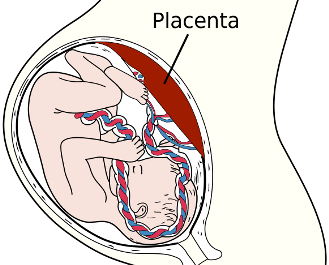Maternal consumption of drugs of abuse can cause adverse changes in the placenta

The aim of the study was to find morphological changes in the feto-placental unit due to prenatal exposure to drugs of abuse. A blind histologic and morphometric study was performed using 225 placentas.
Based on meconium testing, the fetuses were classified as exposed or unexposed to opiates, cocaine, cannabis or alcohol. To establish prenatal tobacco exposure, cotinine (a metabolit of nicotine) in cord blood was analyzed.
At the microscopic level a non statistically significant reduction of placental blod vessels was observed in cocaine, opiates and alcohol using mothers. In addition, alcohol-consuming mothers did not present with larger placental vessel diameter than controls. Newborns from mothers using cocaine or tobacco during pregnancy have lower birth weight and length than controls and mothers using tobacco have higher rate of abortions.
From the results obtained we conclude that gestational use of tobacco, cannabis, and alcohol could induce microscopic changes in placentas at the blood vessels level. These vascular changes would lead to low blood supply of the feto-placental unit producing a low oxigen environment.
Adverse perinatal events and newborn anomalies from drug-using mothers could be explained by these changes of the feto-placental unit induced by prenatal use of drugs of abuse. More studies are needed for a better understanding of the mechanism through which prenatal use of drugs results in lower-birth weight and height babies and increased risk of abortion.
References
Ortigosa S, Friguls B, Joya X, Martinez S, Mariñoso ML, Alameda F, Vall O, Garcia-Algar O. "Feto-placental morphological effects of prenatal exposure to drugs of abuse" Reprod Toxicol. 2012 Aug;34(1):73-9.


